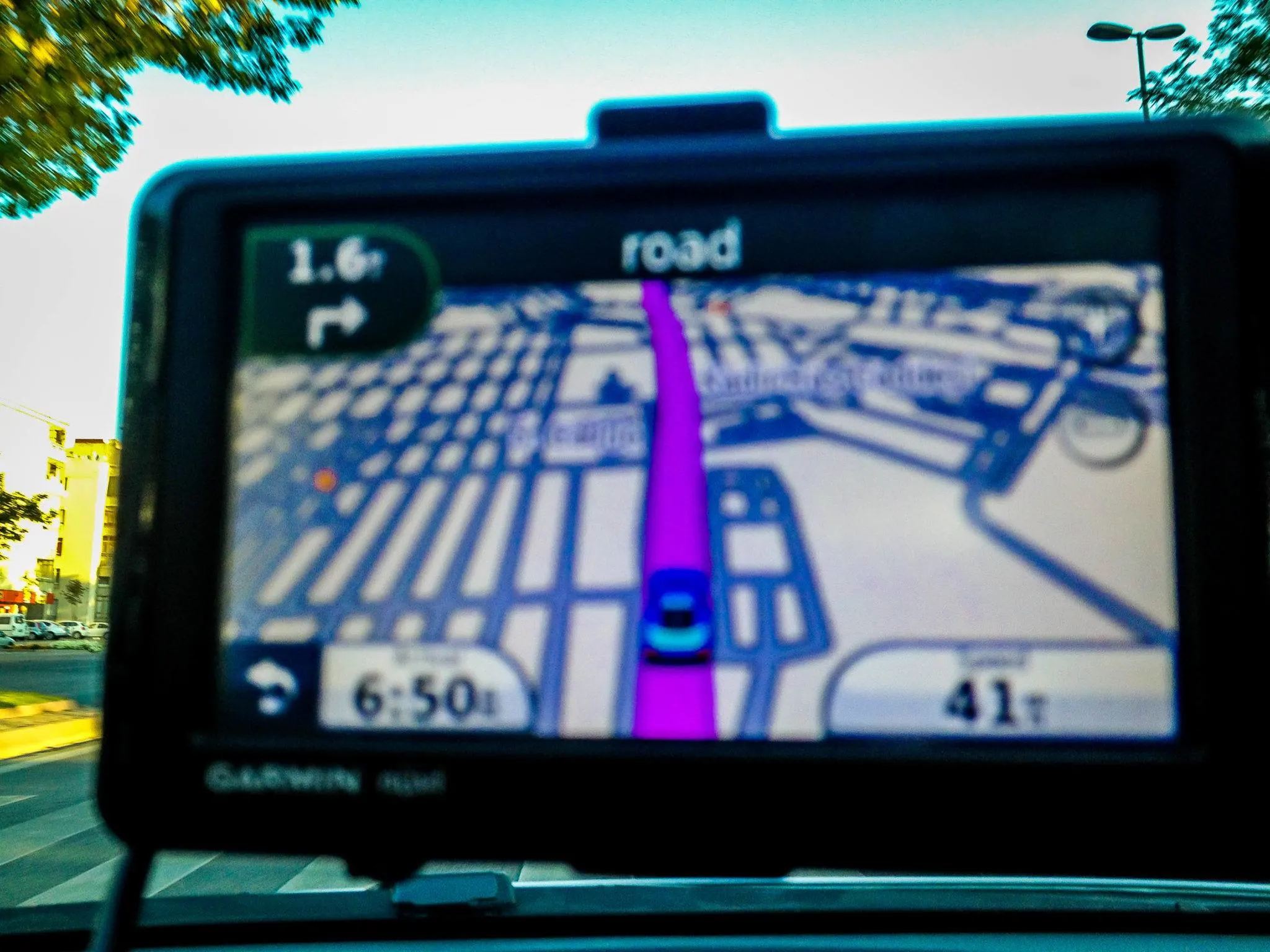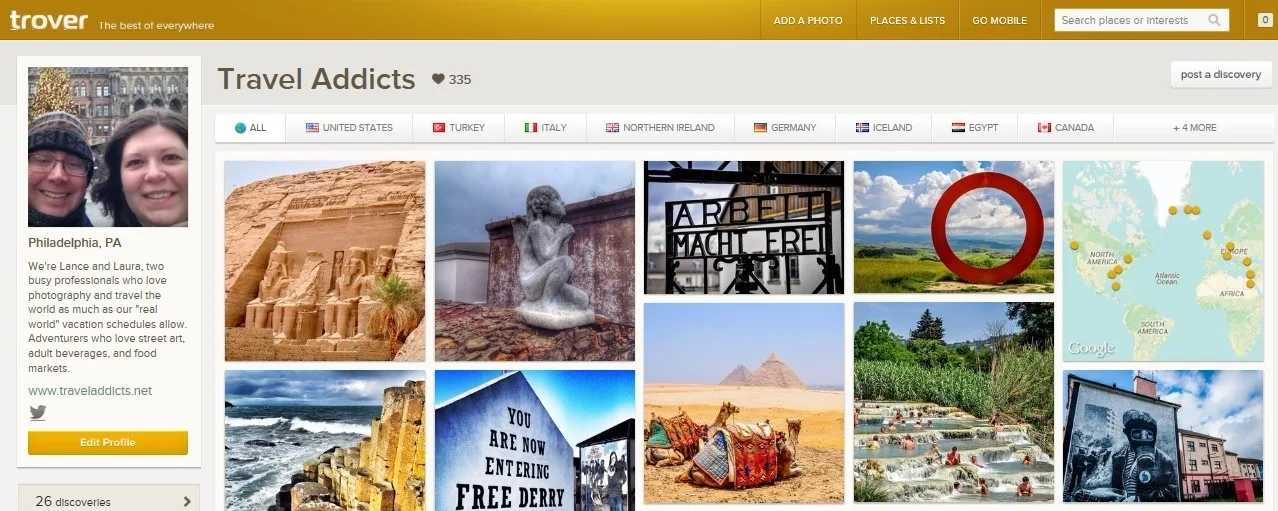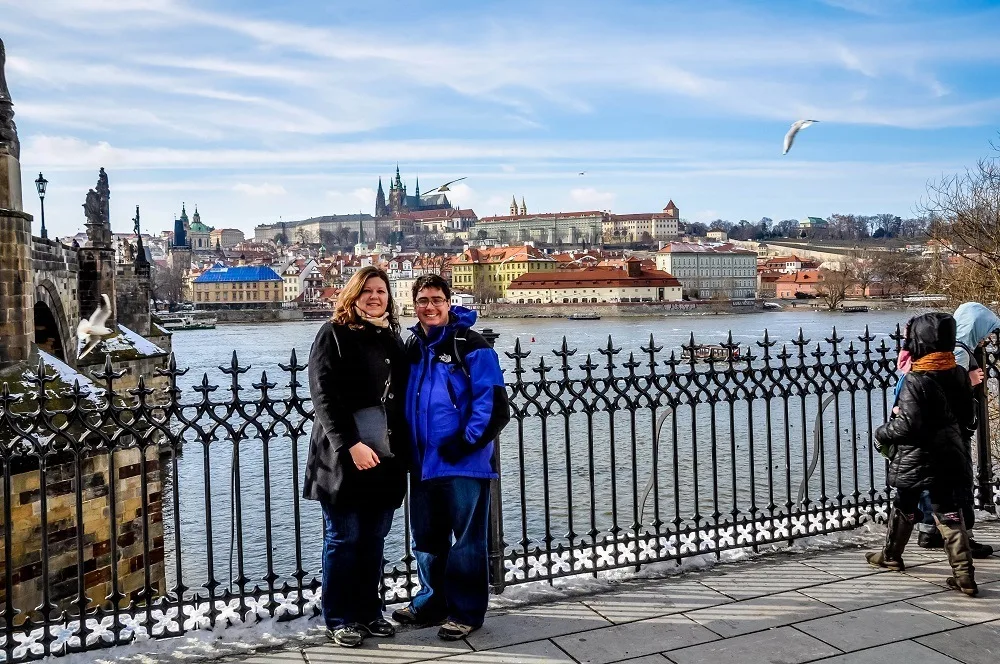When we started this blog six years ago, we never thought we’d see the day that people who weren’t our friends or family would read it, much less that they would write us — but that day has arrived. We thought it might be interesting to answer a few of the questions we’ve received from readers.
How are you able to pack so much into your trips?
We only get three weeks of vacation per year. In 2013, we went to amazing number of places purely by being judicious in our planning. We piggyback vacations onto work trips and, once we get to our destination, we try to do as much as possible. One of the key pieces in our planning process is knowing relative distances.
For example, in Rome, if you stay in the triangle between the Spanish Steps, the Colosseum and the Pantheon, you are centrally located. If you stay further out, you’ll save money on lodging, but the tradeoff can be time.
In some cities, staying in a more remote part of the city can cost you as much as an hour each way in commuting time – that’s two hours out of your day that you otherwise could use for exploring. We carefully weigh the cost vs. location for all of our trips.
For some of our bigger trips, we post step-by-step travel itineraries so you can see exactly how we maximize our time in a destination.
How do you plan your time at your destination?
While there is an element of spontaneity in our travels, not all of it is luck. We do a lot of research in planning to find cool things do, places to photograph and restaurants to experience. There are a ton of internet resources out there, plus numerous traditional guidebooks.
We’ve found that some guidebooks tend to be more budget travel-focused while others focus on more trendy places with a higher price tag. We’ve never found a guidebook exactly geared to our tastes, which is why we always do a fair amount of Internet research.
Recently, we’ve been fascinated with an app called Trover – it’s a photo-focused tool that allows you discover cool things. It works like this: Trover’s community of travelers contribute amazing photos that are tagged by location, these travelers also offer tips (such as how to save money or the best time to photograph the location or the best way to get to the hidden gem that isn’t in the guidebooks). You can sort through the photos, find cool places, like them, and then go visit them. The app tells you exactly how far away the place is from your current location.
Trover is amazing travel inspiration! The best thing is, Trover is built by travelers for travelers and it is really high quality. You’re not sorting through someone’s cat pictures or selfies – it’s just great travel advice. In addition to the app, you can also use the Trover website to plan your travels in advance.
Trover has become one of our top social media apps/sites. The Trover app is free to join and free to use. If you sign up, we hope you’ll consider following us on Trover and liking some of our discoveries! (shameless self-promotion)
Where do you get your foreign currency? Our bank charges really high exchange rates!
First, don’t get your foreign currency in the U.S. U.S. banks and travel bureaus charge really high fees and unfavorable exchange rates. We haven’t exchanged currency in the U.S. in years.
When you arrive in your destination country, withdraw cash from an ATM – you’ll get the best exchange rates. We’ve done a little experiment and not all banks charge the same exchange rates. We recommend using a bank that has a lot of international business/customers. You want a bank that deals with foreign currency as a matter of routine.
Personally, we use USAA for our banking, which has a huge number of customers oversees so they do a lot of foreign exchange. We find we get an exceptional exchange rate through them.
Once we get bills, we try to break them as quickly as possible and try to carry only small bills. Cash machines in Europe typically dispense €50 notes. But we’ve had some difficulty over the years with businesses (particularly taxis) accepting them. So, try to get all of your big bills broken as soon as possible in your trip. Also, if you are in a country where haggling is common, having smaller bills will facilitate the haggling/negotiation process.
However, you don’t always need to pay in cash. When we first started traveling in Europe years ago, many businesses would not take credit cards. Now, it is more uncommon to find someone who doesn’t accept them.
Visa and Mastercard are more universally accepted (American Express is still less common), however, they typically charge a 2-3% foreign transaction feel – on every single transaction. This can add up to hundreds of dollars over the course of a trip. If you find yourself doing significant amounts of international travel, get a credit card with no foreign transaction fee.
You have some photos of major attractions with nobody else in them. Do you edit them a lot?
We both take photos — usually me using the DSLR and Laura with the iPhone so that we have photos for the blog and for social media — which increases the chance of getting good ones and/or ones without people. We also have a lot of luck and have found that one advantage to traveling in the off season is that there are fewer people at the places we’re taking photos. Sometimes, there are extenuating circumstances like when we visited Egypt shortly after the Revolution, and there were no tourists at big attractions like Abu Simbel.
In general, we try to have a lot of patience and set up our shots carefully. There are times where we’ll wait a long time to get the perfect shot without any people in it. This can take awhile, but we enjoy the results. Obviously, there are many times where that’s not possible, though.
When we return from a trip, we edit all our photos in Lightroom. Sometimes we can crop people out, but we don’t digitally remove them otherwise. We try to leave the photos pretty true to their original image, except for photos were we intentionally shoot in HDR or try to manipulate the colors for aesthetic purposes.
We saw you drove around Europe, didn’t that scare you?
Driving oversees is really no different than driving in the U.S. Sometimes you’re driving on the “wrong” side of the road and sometimes you can’t read the signs, but if you keep calm, you should be fine. We’ve driven in France, Germany, Iceland, Ireland, Italy, Liechtenstein, Switzerland and Turkey – all without any major problems (except that time I drove into a rock wall in Ireland).

Here are a few tips we’ve found that make it better:
- Rent from a big-name car rental agency. Yes, you’re going to pay more, but you’re also going to save yourself some headaches with hidden fees and being overcharged.
- We generally don’t do the pre-pay option. Again, it is slightly more expensive, but it also gives us more flexibility.
- We do purchase the rental car agencies insurance or we buy a special insurance package before we leave home. We don’t only rely on the credit card coverage. When I drove my little rental car into a rock wall in Ireland and scrapped up the left fender, we walked away from it without owing anything.
- An international GPS unit (such as a Garmin nuvi) is a huge help. We always take ours from home and it works like champ! We use the now-discontinued Garmin nuvi 1370t, which was preloaded with both North American and European maps. Your best bet now is the Garmin nuvi 2555LMT and then add a regional map micro SD card (for example, the Garmin European maps on micro SD card). But, it’s also helpful to have a hardcopy map backup. We buy our maps at the first gas station we come across on our travels.
- When refilling on gas, you’re going to be shocked at the price. Also, it is very helpful to have a pin-and-chip credit card because some of the gas stations overseas don’t take the less-secure U.S. signature cards.
What is your number one tip to save money on travel?
First, we’re not budget travelers. In our travels, if we have to make the tradeoff between and cost and convenience, we’re going with convenience. However, we also like good value. For us, the best way to save money on travel is through travel hacking. We have a whole travel hacking section on our site with tips, tricks, and information about airline programs (and are always adding new content).
For those unfamiliar with it, travel hacking essentially involves accumulating loyalty points with travel companies (airlines, hotels, airport parking, etc.) to significantly subsidize or completely eliminate your travel costs.
If you have questions, please contact us. We’d love to hear from you!
We’re working with Trover to publicize how absolutely cool it is!
Lance Longwell is a travel writer and photographer who has published Travel Addicts since 2008, making it one of the oldest travel blogs. He is a life-long traveler, having visited all 50 of the United States by the time he graduated high school. Lance has continued his adventures by visiting 70 countries on 5 continents – all in search of the world’s perfect sausage. He’s a passionate foodie and enjoys hot springs and cultural oddities. When he’s not traveling (or writing about travel), you’ll find him photographing his hometown of Philadelphia.




Abdul Razzak
Wednesday 30th of April 2014
This is amazing stuff, Its inspiring to know that you have that much energy to complete your work and also manage to get time to travel and complete your zeal of being a travel freak :)
You've got a wonderful blog and some great pictures too. Keep up the good work and keep the audience entertaining. Cheers!
Kristin
Saturday 1st of March 2014
I'm so glad you put such a big focus on location! I can't tell you how many times I've battled over hotels when planning trips with friends-- it's never a bargain when you are trekking in from the outskirts (don't even get me started on the friend who made us stay in Osaka for our trip to Kyoto!). I've learned that I'd rather stay less days and pay more for a central location-- it's not only the time you save, but also the convenience of popping back to your room to drop bags off or even to relax for a few minutes. Great post!
Lance Longwell
Saturday 1st of March 2014
Thanks Kristin. Location is usually our key decision and everything else flows from that!
Diana Edelman
Monday 24th of February 2014
I wish I was a better planner of my trips! I normally don't do anything, then just rock up to a place, get lost, then meet people and ask for their opinions on what to do/where to go -- at least for places I don't know much about.
I used to be a budget backpacker, but it sure is nice to spend a little more money and be in the heart of it all and have a comfortable bed (and not have to wear flip flops in the shared shower).
These are great questions/answers!
Ayngelina
Friday 21st of February 2014
I'm quite spontaneous on my own but when traveling with others I plan everything. Trover sounds like an interesting app, I may use it to plan my next trip with others to Vegas.
Lance Longwell
Friday 21st of February 2014
Oooh, Vegas. That sounds like fun! Hope you have a great trip.
Nancy
Thursday 20th of February 2014
Your tips on "limited-time" travel are among the most helpful suggestions I've encountered. I,too, am anguished at the paultry vacation time that my job affords me (especially when I compare myself with the Europeans) and I know that I would be even more limited if I didn't have your blog, and similar sources to help me plan. Thanks for publishing!!
Lance Longwell
Thursday 20th of February 2014
Thanks for your kind words! Safe travels.